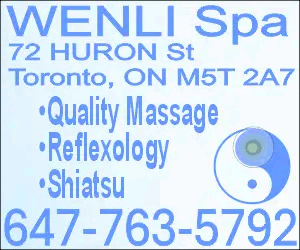
RELATED: How to Get a Cycling-Specific Massage
An osteopath has a very different background than a typical massage therapist—Rankin is a doctor who specializes in musculoskeletal issues, while massage therapists train solely in that practice. However, massage is often part of an osteopathic treatment, and it's a practice from which most cyclists could benefit—whether they're experiencing pain, or just looking to recover from hard workouts faster.
While every aspect of my treatment has played a role in pain reduction and increased range of motion, I have to admit that I’m going to miss the massage the most. Before my visits to Rankin, I was a massage newbie, and along the way, I picked up a few important things you'll want to know before you get on the massage table.
VIDEO: Get Fast: Self Massage Techniques
1. Be prepared to strip.
Your massage therapist will need you to strip down to your shorts or underwear to work on you. During my first session, Rankin and I chatted about my back issues for a few minutes before he ducked out of the room so I could get situated on the table. He knocked to make sure I was all set before he returned to the room, and kept me draped with towels except for the area he was working on. I'm not overly comfortable with being naked, but this was easy—it didn't feel that different from putting on a gown when you visit the doctor.
2. Hydrate like crazy.
Following my first appointment, Rankin suggested I drink a lot of water over the subsequent 24 hours: Massage releases toxins similar to lactic acid into the muscles and blood stream, and water helps the body better process what has been released. While the American Massage Therapy Association backs Rankin’s recommendation, the notion of massage as a means to release muscle toxins remains a matter of debate in the medical community. Bottom line: Hydrating never hurts, so plan to drink a bit more than usual, just in case.
3. You may feel worse before you feel better.
My best friend gave me the heads’ up on this one. I was grateful to recall her words when I woke up the morning following my initial appointment feeling battered and bruised. Massage regulars tell me that habitual massage lessens the post-session discomfort.
RELATED: Minimize Muscle Pain and Downtime with These Recovery Tactics
4. Plan to book more than one session.
If you’re seeing a massage therapist as part of your treatment for an injury or to address chronic problems, expect to need multiple sessions because the benefits of massage are cumulative. Rankin told me that he tends to see the biggest changes between the second and third appointment when it comes to alleviating tension and eliminating pain.
Personally, my body wasn’t super happy with me after my first and second appointment but following round three, I felt like a million bucks. I didn’t wake up with that bruised and battered feeling I had come to expect post-massage, and I also felt a major increase in mobility and decrease in stiffness - both of which were goals of treatment. .
5. All massages are not created equal.
There are many different types of massages and massage practitioners have a diverse set of titles. While all practices are valid, they may not suit your needs. I had an experience with Reiki, a type of energy work, during a cycling camp that did nothing for my sore and weary muscles because of the lack of deep tissue pressure involved but would have been fabulous had I been looking for treatment focused on relaxation. So get recommendations. Do your research. When you make an appointment, ask questions. This will ensure that you get the experience you're looking for.
This entry passed through the Full-Text RSS service - if this is your content and you're reading it on someone else's site, please read the FAQ at fivefilters.org/content-only/faq.php#publishers.











































































































